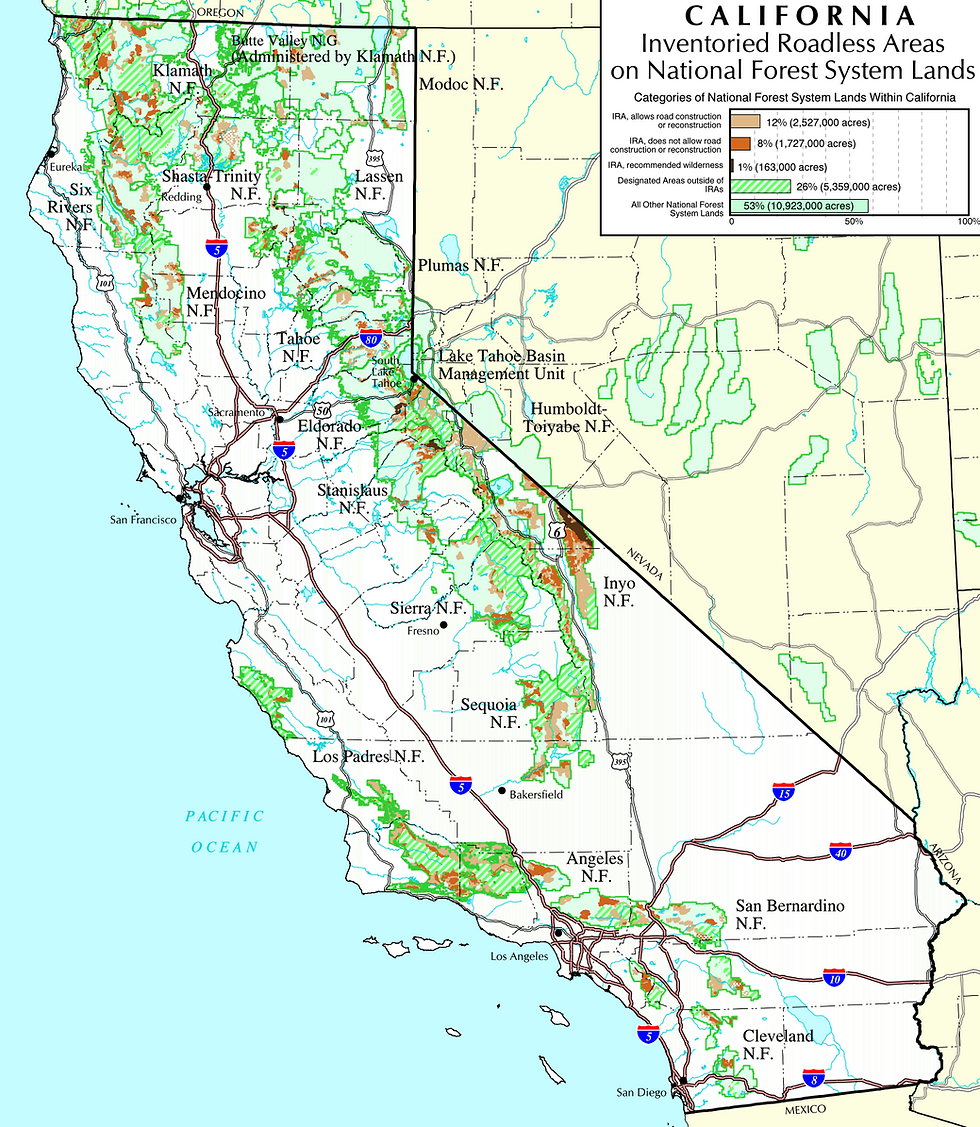Last Chance Grade: Looking at Alternatives
- Jun 8, 2015
- 2 min read
The Redwood Highway, also known as Highway 101, is the main north-south arterial connection for north coast residents and visitors alike. “Last Chance Grade” is a stretch of Highway 101 about ten miles south of Crescent City, which sits precariously high above the Pacific Ocean and experiences frequent landslides due to the geological instability of the area. Within this corridor, landslides have been an ongoing problem for decades, resulting in regular road closures. Currently, Caltrans is in the beginning stages of planning for the Last Chance Grade Project. The agency is considering possible alternatives and reroutes that would take the road along an inland path to the east through coastal scrub, riparian and young, mature and old-growth forests within the Del Norte Coast State and National Park boundaries.
The project bypass proposals are big and expensive and one could result in the removal of up to three acres of old-growth redwoods (30-50 trees); all would result in significant cuts to the hillside with nearly a million cubic yards of fill that would need to be disposed of (and not in the nearby creeks). All bypass alternatives would directly impact the natural resources in and visitor access to Del Norte Coast Redwoods State Park. If Caltrans were to follow its traditional methods of operation, the project would result in major conflict and controversy.
Perhaps sensing that Last Chance Grade could be yet another disastrous Caltrans project, Congressman Jared Huffman stepped in and commissioned the creation of the Last Chance Grade Stakeholder Working Group. Elected officials from Humboldt and Del Norte County, three tribes, members of the public, business interests and environmental organizations, including EPIC, have a seat at the table. Over the next ten meetings, the group is tasked with reaching consensus to recommend one or two alternatives to Caltrans that would be the “preferred” alternative(s) to address the geological instability and potential for roadway failure at Last Chance Grade.
Thus far, the stakeholders have meet twice, toured the slide area and spoken with Caltrans’ geotechnical engineer about the slide and learned about existing construction fixes to the roadbed. According to Caltrans, the slide is nearly one mile long, about 2,500 feet wide and at a minimum 250 feet deep. The sheer size of the slide, the steepness of the cliff and the composition of the geology make the project area difficult to design around. Caltrans repaves the roadway monthly to combat sinking. The stakeholders are exploring all viable options including using the existing right of way, by way of a viaduct, and a tunnel.
This multi-stakeholder process is the first for Caltrans District 1. Perhaps the agency is learning that the community deserves an honest and open discussion about the social and environmental impacts of highway development? This process is a far cry from the way in which Caltrans District 1 first attempted to fast-track approval of the STAA highway-widening project at Richardson Grove State Park back in 2007. For the past seven years, EPIC has been calling on the agency to explain its decisions, take into account community concerns and operate in accordance with the law. “These should not be ridiculous expectations for a public agency,” said Natalynne DeLapp, Executive Director of EPIC. “However, three contentious lawsuits: Richardson Grove, Willits Bypass and the Smith River’s 199/197 projects have shown that Caltrans was not forthcoming with the public or respecting our laws.”
Caltrans has an opportunity to get it right with Last Chance Grade. There is little question among EPIC staff that the project has a legitimate need: to maintain motorist safety and connectivity of the major highway between Oregon and California. “We appreciate the opportunity to participate in the process and will work cooperatively with the stakeholders to find solutions that will adequately address the needs of the community, while protecting the rare and sensitive environments,” said Natalynne. “As this project unfolds, EPIC will continue to advocate for full public transparency and protection of old-growth redwood forest and salmon habitat values.”





Comments